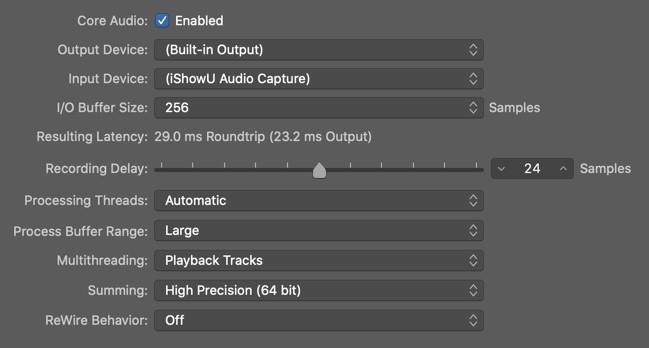What is buffer size in music production? Every DAW comes with the option to change the buffer size. Usually the values are 32, 64, 128, 256, 512 & 1024 samples. The higher the value, the more increased latency. The latency is the time it takes from pressing play to the moment we actually hear the resulting audio.
The purpose of the buffer is to buy your operating system more time – resulting in less taxation on the CPU. This helps things run more smoothly during your studio session and also maintain a healthier computer.
Measuring resulting latency from buffer sizes
Each buffer size has a resulting latency, usually measured in milliseconds due to the fact that the delay shouldn’t ever exceed one second. For example, a buffer size of 256 samples will have an output latency of 23.2ms (or 29.0ms for roundtrip). More samples, more delay.
Having a lower buffer size is great for recording live takes but will certainly put more strain on your CPU. If this is the case then increase the buffer size when you’ve recorded everything you need to.

When to use large buffers
If you’re not intending to make any live recording(s) during your session then it’s advisable to leave the buffer size at 256 or higher. If you’re also running a number of other programs or apps, particularly other design applications – these too will be fighting for processing power in the background!
As projects grow in size, they become more demanding on the system. If you’re happy with all the recordings you’ve made, ramp up the buffer whilst you make all the finishing touches! The chances are, you’re already fatigued and frustrated with everything the production has thrown at you. So don’t let a system overload cause additional grief in the final stages. Now you know what the buffer size is in music production!

Omggg. Wish I knew this like 5 years ago. I don’t play anything live so could have just used the higher buffer all along… I make techno 😀 thanks SamleChilli
Yep, a lifesaver if you’ve got busy projects with lots of FX and channels! ~ David